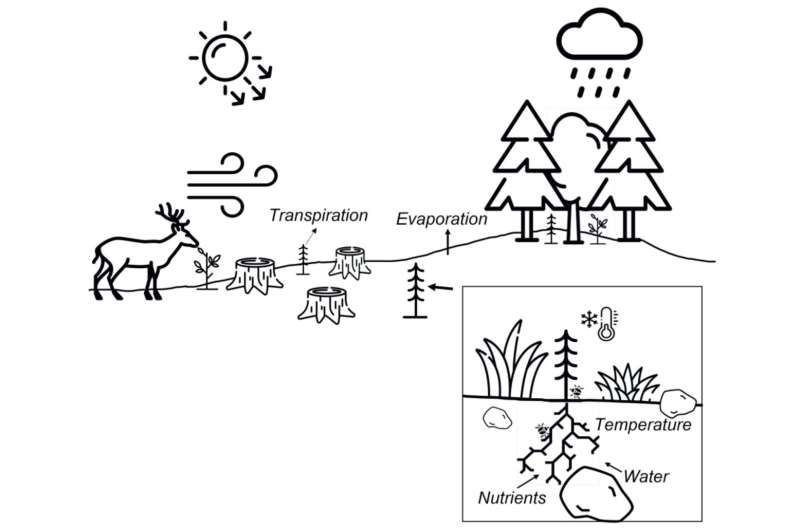This article has been reviewed according to Science X's editorial process and policies. Editors have highlighted the following attributes while ensuring the content's credibility:
fact-checked
trusted source
proofread
Improving precision of planning results in resilient forests

A new dissertation on forest industrial production systems, from researcher Per Nordin at Linnaeus University, reveals that successful regeneration measures are crucial for sustainable forestry. To ensure successful plant establishment, it is important to make decisions based on factors at regional, stand, and microenvironment levels.
Regeneration measures in forestry aim to establish new forests on recently cleared or otherwise deforested land. This includes activities such as planting new trees, dispersing seeds, or using natural regeneration to create a new forest. Soil preparation can also be used to improve the conditions for plant growth and establishment.
In the study Per Nordin examined what combinations of regeneration methods result in low plant mortality and high growth. It also explored the potential for using digital tools in regeneration planning. The research was conducted through field experiments and a field study in which digital tools were integrated in analyses and testing.
"Digital tools such as soil moisture maps have previously been used in forestry for logging and thinning planning. However, in my dissertation, I have attempted to provide examples of how these can also be used in regenerations. Many high-resolution maps can be used to provide a detailed picture of local variations and, thereby, offer a solid foundation for planning work," Per Nordin explains.
The study found that the quality of soil preparation was a crucial factor in plant survival and growth. Soil preparation involves removing competing vegetation and exposing the mineral soil layer. The choice of soil preparation method was of less importance, but the ability of soil preparation to create favorable planting spots was decisive.
"Selecting the right location for tree planting is important for their survival and growth. If the site is moist, it is better to choose a higher position for planting. If the site is dry, there is more flexibility in the choice of position. Different tree species, such as spruce, pine, and birch, respond differently to their planting locations," Nordin continues.
The study also revealed that soil disturbance (changes in soil structure or properties) was influenced by the choice of soil preparation method, and that natural regeneration benefited from all methods used in the experiments.
"My dissertation points out the importance of precision and adaptation in regeneration decisions—in order to benefit future forests. The research helps understand how different regeneration methods affect plant survival and growth, while presenting new opportunities with digital tools in regeneration planning," Nordin concludes.
More information: Dissertation: lnu.diva-portal.org/smash/reco … sf?pid=diva2:1753095
Provided by Swedish Research Council




















